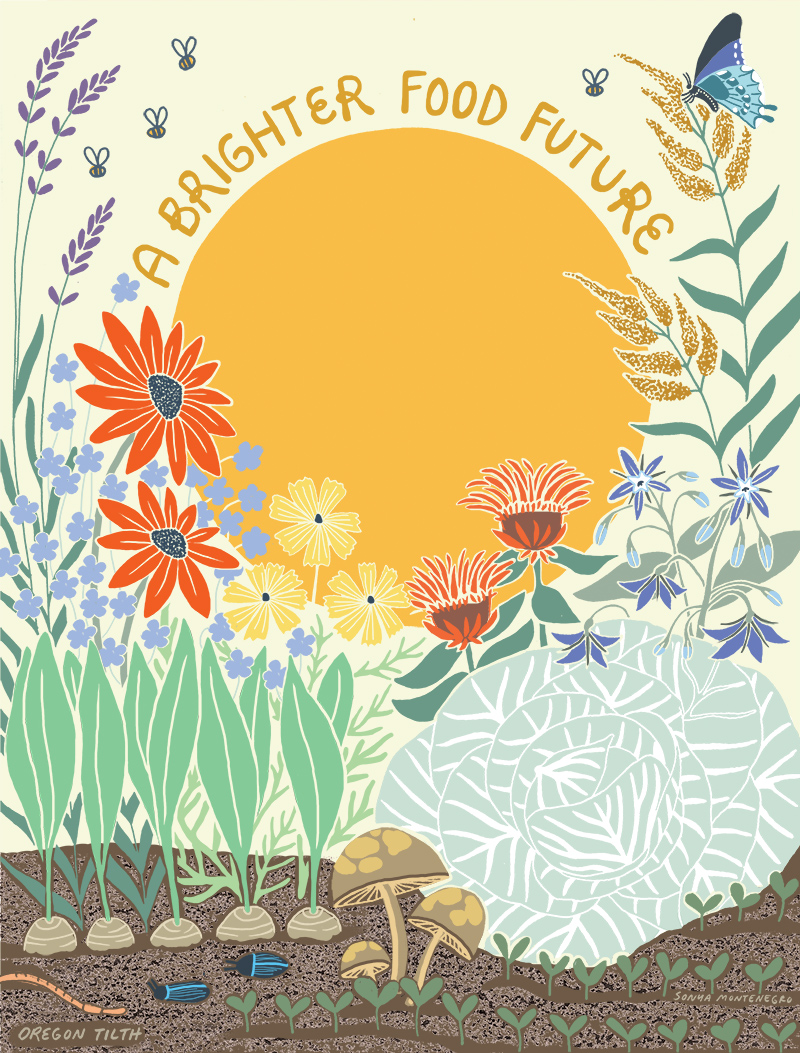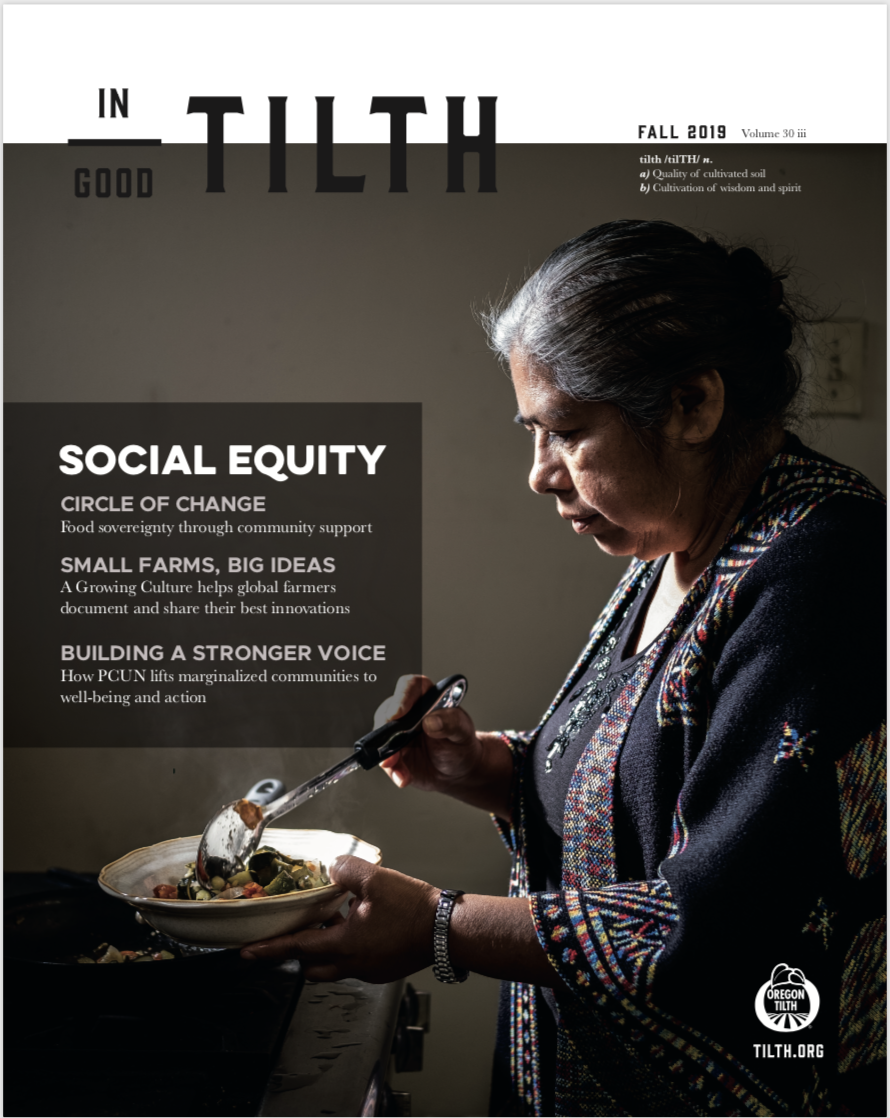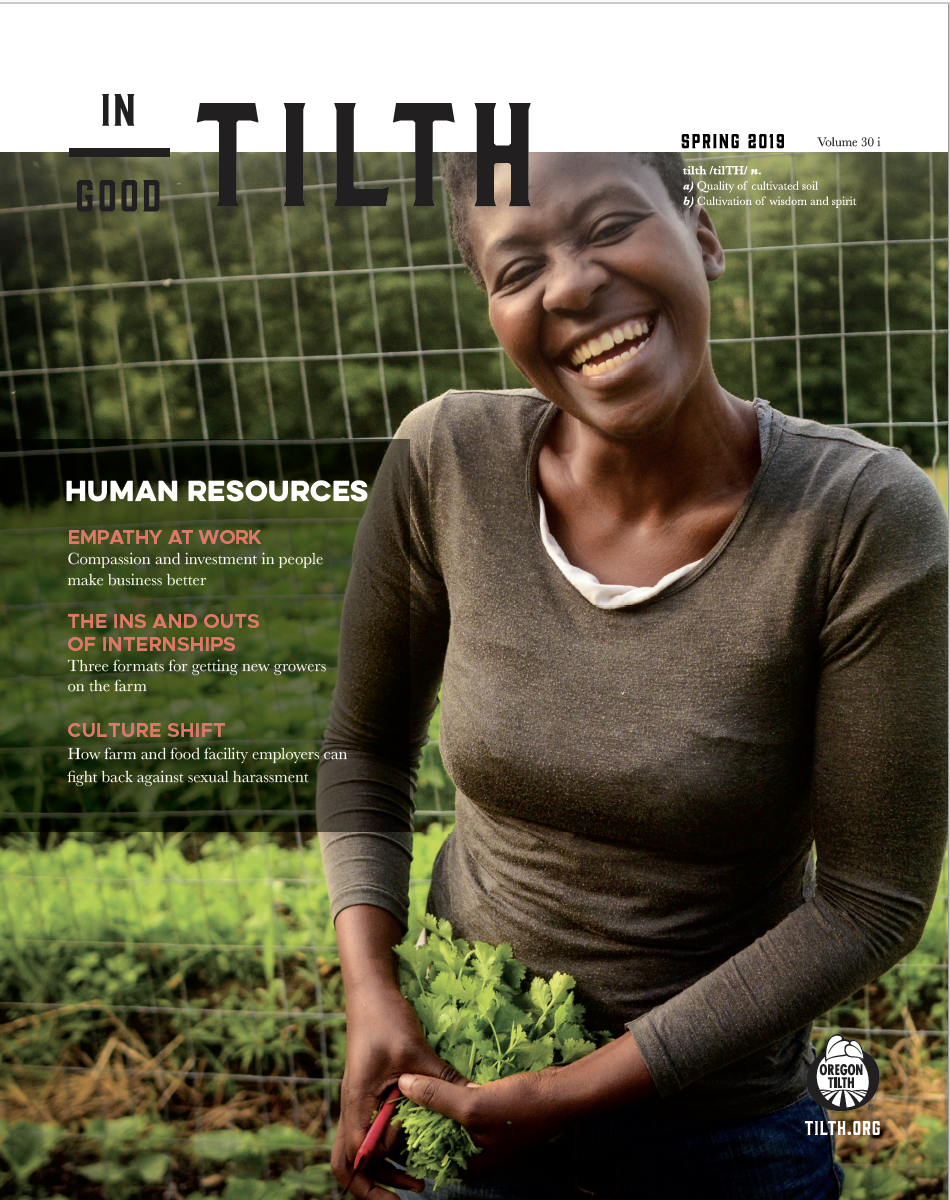In 2006, Michael O’Gorman, the executive director of the Farmer Veteran Coalition, read a study that the majority of American soldiers fighting in Iraq and Afghanistan came from rural communities. This would change the trajectory of his life. A child of the ‘60s, O’Gorman, a self-identified religious pacifist, had no military background. He grew up in Northern California, was involved in the civil rights movement, and had spent most of his career managing some of the largest organic farms in North America. But recent events — his daughter survived the World Trade Center attack, and his son enlisted in the military days afterwards — had forced him to grapple with big questions about why the U.S. goes to war and how we treat soldiers who return from war. And this study — this connection between soldiers and the rural landscape he knew so well — brought something very important into focus. Veterans need meaningful jobs, and the country needs a new generation of farmers to feed it.
The next year, the Farmer Veteran Coalition was born. From the first meeting, a feeling of auspiciousness was present. O’Gorman and several other farmers met in a strawberry field at Jim Cochran’s Swanton Berry Farm in Santa Cruz, California.
Uninvited, three women who separately saw a notice about the meeting also came. Each had lost a son in the Iraq and Afghanistan wars, and each was drawn to the notion of helping soldiers become farmers.

“It was powerful,” said O’Gorman. “At that time, the country was deeply divided over the war in Iraq, and this felt so positive.
It just felt like the light bulbs were going off.” Today, the Farmer Veteran Coalition is a leading voice in the quest to help veterans find meaningful, engaging careers in agriculture. It helps veterans find educational opportunities, connect with mentors, access financing and fellowships, plan businesses and get jobs. It also administers the Homegrown by Heroes program, a consumer-facing label that shows a product was grown or made by a military veteran. And starting this year, it has its own training program on a new certified-organic six-acre teaching farm in San Jose, California. Jacobs Farm/Del Cabo donated the land, which is managed and staffed entirely by military veterans.
Why veterans?
Why help veterans become farmers? First and foremost, they are needed. The number of farmers in America is going down, and their average age is going up. Returning veterans often struggle to find meaningful work, and farming represents an opportunity to use their considerable skills to accomplish a new kind of mission: feeding a hungry, growing world.
The number of farmers and the number of active duty military personnel are both near historic lows. According to the U.S. Department of Defense, there will be slightly more than 2 million active duty military personnel (including reservists) by the end of 2017, representing about 0.6 percent of the U.S. population. In 1969, the number of active duty military personnel was 3.5 million, about 1.7 percent of the U.S. population and more than 11 percent of all men between the ages of 20 and 44.
And according to the 2012 Agricultural Census, nearly 3.2 million farmers (including primary, secondary and tertiary operators) were in the U.S., also representing less than one percent of the population. In 1920, 30.2 percent of the population worked in farm occupations.

tomatoes at the Farmer Veteran Coalition’s San Jose Teaching Farm. Photo courtesy of the Farmer Veteran Coalition
“We’re the intersection of less than 1 percent times less than one percent,” said O’Gorman.
While he isn’t sure if veterans are truly underrepresented in the farming community, O’Gorman does think that the increasing age of U.S. farmers, as well as the decreasing number of recent veterans, means the majority of veteran farmers are older, established farmers. We’ll know more soon. This year’s agricultural census, for the first time, is asking farmers about veteran status.
Younger returning veterans face the same challenges that new farmers everywhere face — learning the business, accessing land, developing a marketing plan and getting better at the work — coupled with the added burden of physical injuries and psychological scars. Yet the same events that are responsible for those challenges are sources of strength.
“There’s a certain maturity that they bring from having gone out and done something else that was challenging, that took everything they had,” said O’Gorman. “I think it makes it more likely they’ll stay on the path they choose to pursue once they do decide to go forward.”

What attracts veterans to farming?
When Matt Smiley, former Army paratrooper and medic and current farm placement and training manager at the Farmer Veteran Coalition’s San Jose Teaching Farm, was asked why he thinks veterans make good farmers, he laughed.
“When you’re in the military, you basically wake up really early, and you have a plan, you have an operation, you have a mission, you have to execute it. You work with your team about how you’re going to do it, and you start, and it never goes as planned. You have to adapt, and farming is all about being adaptive.”
Veterans also find benefits in farming that extend beyond the opportunities to use their existing skills. According to the RAND Corporation, 18.5 percent of U.S. military veterans returning from Iraq and Afghanistan experience posttraumatic stress disorder or depression. Yet a growing body of research suggests that gardening has a powerful positive effect on mental health, and many veterans report that working with plants and animals on farms has helped them feel calmer, happier, and more peaceful.
Despite their differences, the culture of farming also fits well with the culture of the military. In both worlds, hard work matters.
“The military and agriculture are both meritocracies,” said O’Gorman. “You rise according to performance, and that’s a lot of what farming is too. It’s not who you know or where you went to school, it’s your daily effort, and there’s a certain nobility in that.”
The community aspect of farming is also a powerful draw for veterans. “Farmers take care of each other, look out for each other,” said Smiley. “It’s very team-based, and I was really attracted to that.”

But perhaps the most compelling draw for veterans interested in becoming farmers is the opportunity to continue being of service. O’Gorman said that farming’s deeply necessary quality is a powerful impetus for people who answered the call of military service.
“Defending people protects their freedom,” he said, “but those who farm give another incredible level of freedom to the rest of the country: The freedom to go do whatever the heck you please and not have to be tied to waking up at 4 a.m. for the rest of your life to take on the commitment of getting food on the table…it’s a willingness and desire to experience life head-on, not secondhand. There’s a willingness to take on the hard things themselves instead of sit back and support somebody else doing it.”
What about organic?
The Farmer Veteran Coalition supports organic and conventional growers, a choice that O’Gorman and his co-founders made deliberately. “In the same way we put politics aside to start the group, I put how somebody farms aside,” he said.
Veterans have a diverse range of views on environmentalism, but O’Gorman said when he doesn’t focus on the labels, he finds a deep well of interest in organic and sustainable agriculture.
“The interest in organics is enormous,” he said. “But it’s definitely not your 1970s organic farmer… there’s a huge focus on health and diet and nutrition, and there’s also a sense of a libertarian streak, like not wanting to be dependent on the large suppliers. I call it organics with the second amendment.”
For Smiley, sustainability in agriculture just makes sense. “Coming back from the war, I did a lot of thinking,” he said. “You learn a lot about how much war and things like that are tied to our relationship with nature and how we treat our resources. With organic farming, you’re feeding people. That’s awesome — it doesn’t get much better than that — but on top of that, caring for our natural resources is how you prevent war.”
The organic agriculture community and the military don’t always share the same outlook, values or even language, but they occupy plenty of common ground. “They’re two really, really critical and intertwined parts of our society, two of the largest sectors of our economy and the two things that are most credibly instrumental to our security as a nation,” said O’Gorman.

As of 2015, the Farmer Veteran Coalition had grown from an idea hatched in a Santa Cruz strawberry field to a national organization with more than 4,500 members — and an inspiration for other organizations.
“It’s a social movement,” said O’Gorman. “There are 50 or 100 groups working on this around the country that didn’t exist before. This wasn’t happening. Isaiah talked about it in the Bible, but nobody actually did it.”
Connecting returning veterans with opportunities to serve through agriculture is a triple win — a win for our aging agricultural workforce, a win for veterans seeking meaningful employment and a win for American eaters — and a powerful balm in a time when many people hunger for a return to feelings of national unity.
Back at the San Jose Teaching Farm, Smiley was in the thick of his first year managing the farm. He and an assistant farm manager, also a veteran, are getting a team of six veteran interns up to speed on caring for summer crops like tomatoes, sweet corn, bell peppers, basil, cucumbers, eggplant and melon. He reported that several local veterans from the Vietnam era have started volunteering, and everybody’s interested in figuring out ways to incorporate livestock in a way that benefits vegetable production. There’s still plenty of work to be done, but the satisfactions are already starting to accrue.
“I really like working with vets,” said Smiley, “and actually farming land and seeing the land get better. That’s an incredible experience.”



















